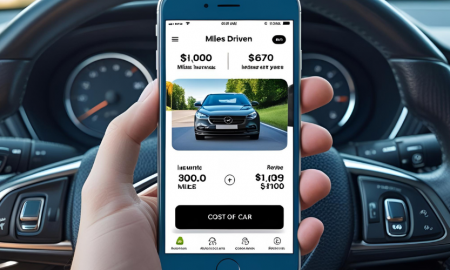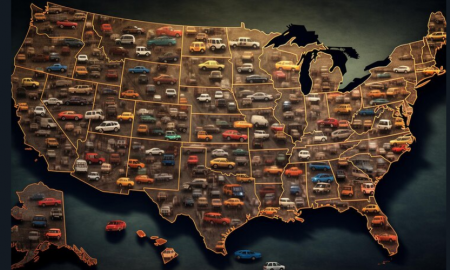
Here’s How Accidents Can Affect Car Insurance Premium Plans

like medical insurance, car insurance is just as important since cars play an important role in our lives. For some people, their cars are directly connected to their livelihood. Just think about someone who has to travel a long distance just to get to work. They can’t afford not to have a car, and because of this, insurance companies have a lot of thinking to do to maintain their huge number of clients.
These insurance providers have to take into account that there are numerous competitors out there that can provide the clients with a sustainable-enough cost to cover their bills without pushing them away. However, when these clients face accidents, it can surely influence the pricing equation at the renewal time, whether the accident was their fault or not. That being said, here are some reasons why this can happen.

Jeshoots/Pexels | Some of these reasons might shock you
1. Making A Claim
Clients get hit with a higher premium after they have made a car insurance claim. This is because the clients lose their no-claims discount, often referred to as NCD. The NCD is a kind of reward awarded to clients that do not make any claims throughout their policy tenure. So, when it is time to renew their insurance, they get a discounted price.
NCDs can easily drop the price by a whopping 80 percent. It doesn’t matter if you’ve gone for years without making a claim. But, as soon as you do, the prices are bound to go up. The good thing is that NCDs can be transferred from one insurer to the other, so you don’t have to worry about missing out on a discount when you switch your insurer.

Pixabay/Pexels | Insurers reward you for not getting in a car accident
2. ‘At Fault’ And ‘No-Fault’ Claim
The increased amount of premium insurance can also be influenced by the status of the client and the accident, whether they were at fault or not. As you can imagine, clients who are at fault instantly receive an increased rate at renewal in comparison to people who are deemed to be not at fault. A no-fault claim is when a policyholder gets into an accident that they didn’t cause. For example, if you are waiting at a stop sign and suddenly a car crashes into you, then you are not at fault, but if you were breaking a red-light signal and then being met with an accident, then you are at fault.
3. Risk Assessment
If you are not satisfied with your current car insurance firm and you decide to switch, the new car insurance firm is going to inquire whether or not you have previously made insurance claims. Accordingly, then, they will proceed to ask you for specific details so they can start their risk assessment process and give you the high premium cost. This cost will most likely be higher than the cost when you had not filed a claim.

Andrea/Pexels | You cannot hide any previous insurance claims since they can render the policy null and void
So, all you have to do is to protect your car from getting into accidents.
More inCar Insurance
-
`
Adults in Ohio Face Stricter Rules to Obtain Driver’s License
Ohio has passed a new law that will change the way adults under 21 get their driver’s licenses. Signed into law...
July 31, 2025 -
`
Gen Z Craves Career Guidance, But Their Parents Are Struggling Too
Gen Z is stepping into the future with curiosity and ambition—but they’re not doing it alone. A growing number of teens...
July 25, 2025 -
`
Do Car Insurance Companies Offer Pay-As-You-Go Plans?
Car insurance premiums often feel unfair to people who rarely drive. Yet, most traditional auto policies still charge a fixed monthly...
July 17, 2025 -
`
Why the Koenigsegg Sadair Spear Is the Ultimate Hypercar Beast
Koenigsegg has revealed a new beast—the Sadair’s Spear. Tuning its focus on raw performance and brutal speed, this hypercar marks the...
July 11, 2025 -
`
Which States Have the Safest—and Riskiest—Drivers in America?
Driving safety isn’t just about skill. It’s also about location. A recent nationwide report shines a spotlight on where drivers are...
July 4, 2025 -
`
How to Save on Tesla Car Insurance Without Compromising Coverage
Owning a Tesla often brings savings on fuel and a futuristic driving experience, but the conversation changes quickly when it comes...
June 26, 2025 -
`
10 Weird Cars That Turned Heads and Won Hearts
Some cars turn heads with speed, others with luxury—but a rare few grab your attention simply by being delightfully strange. From...
June 20, 2025 -
`
Next-Gen Jeep Cherokee Expected to Arrive by Late 2025
After a break of two years, Jeep is prepared to relaunch the Cherokee brand. The automaker confirmed the return with fresh...
June 12, 2025 -
`
9 Tips to Make Night Driving Safer and Less Frightening
Once the sun dips below the horizon, driving becomes more than just a commute—it becomes a challenge. Limited visibility, harsh glares,...
June 6, 2025















You must be logged in to post a comment Login